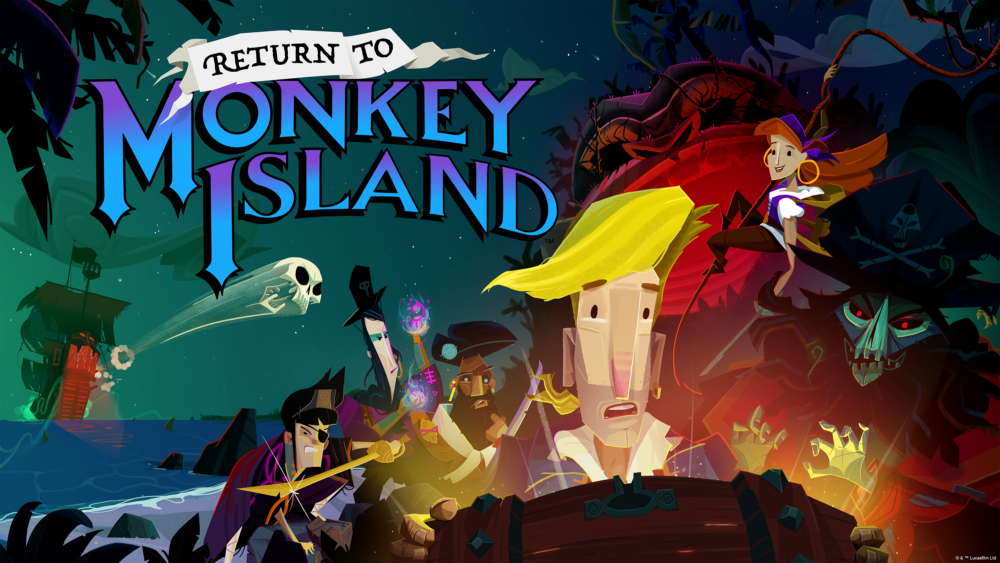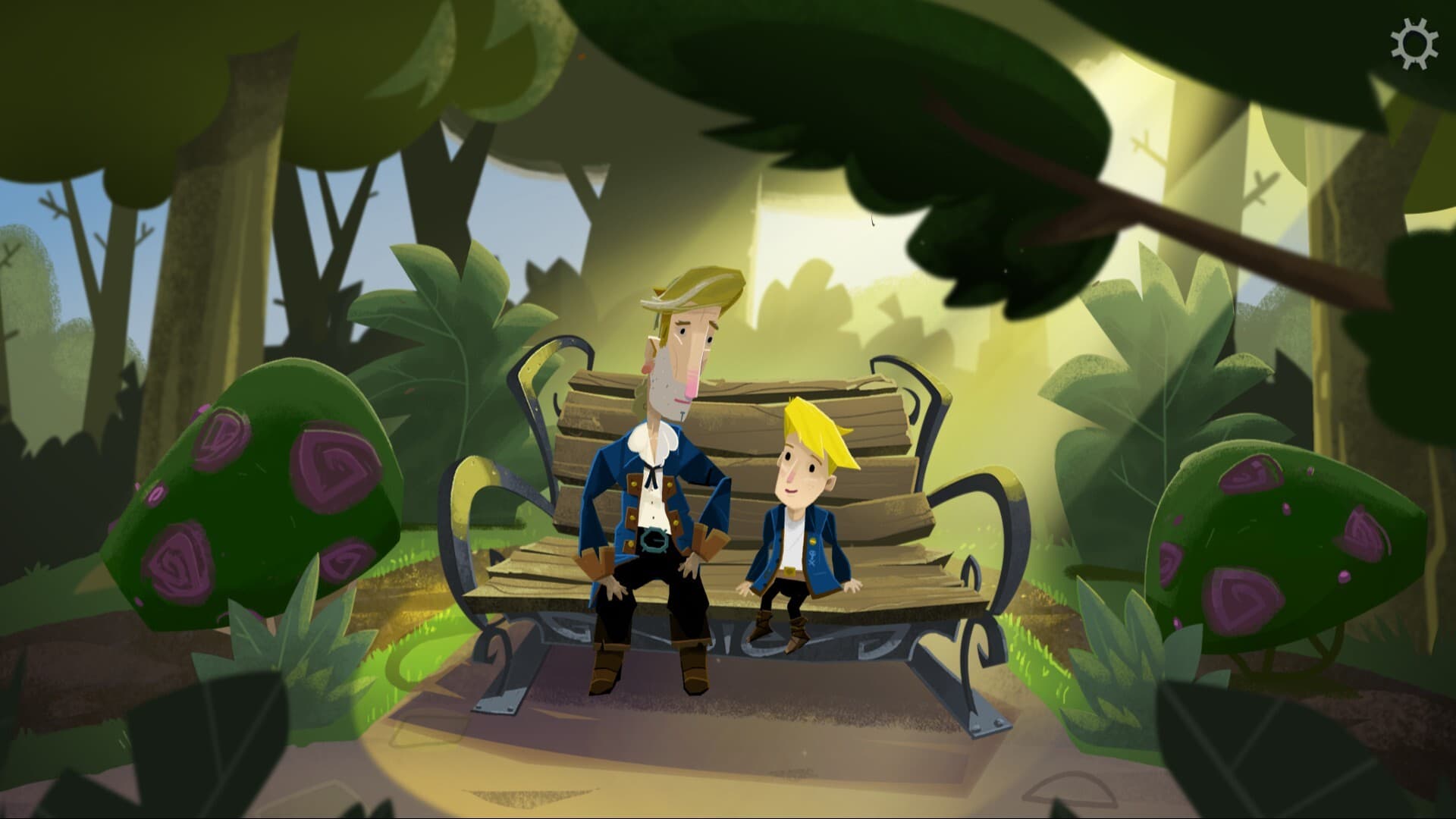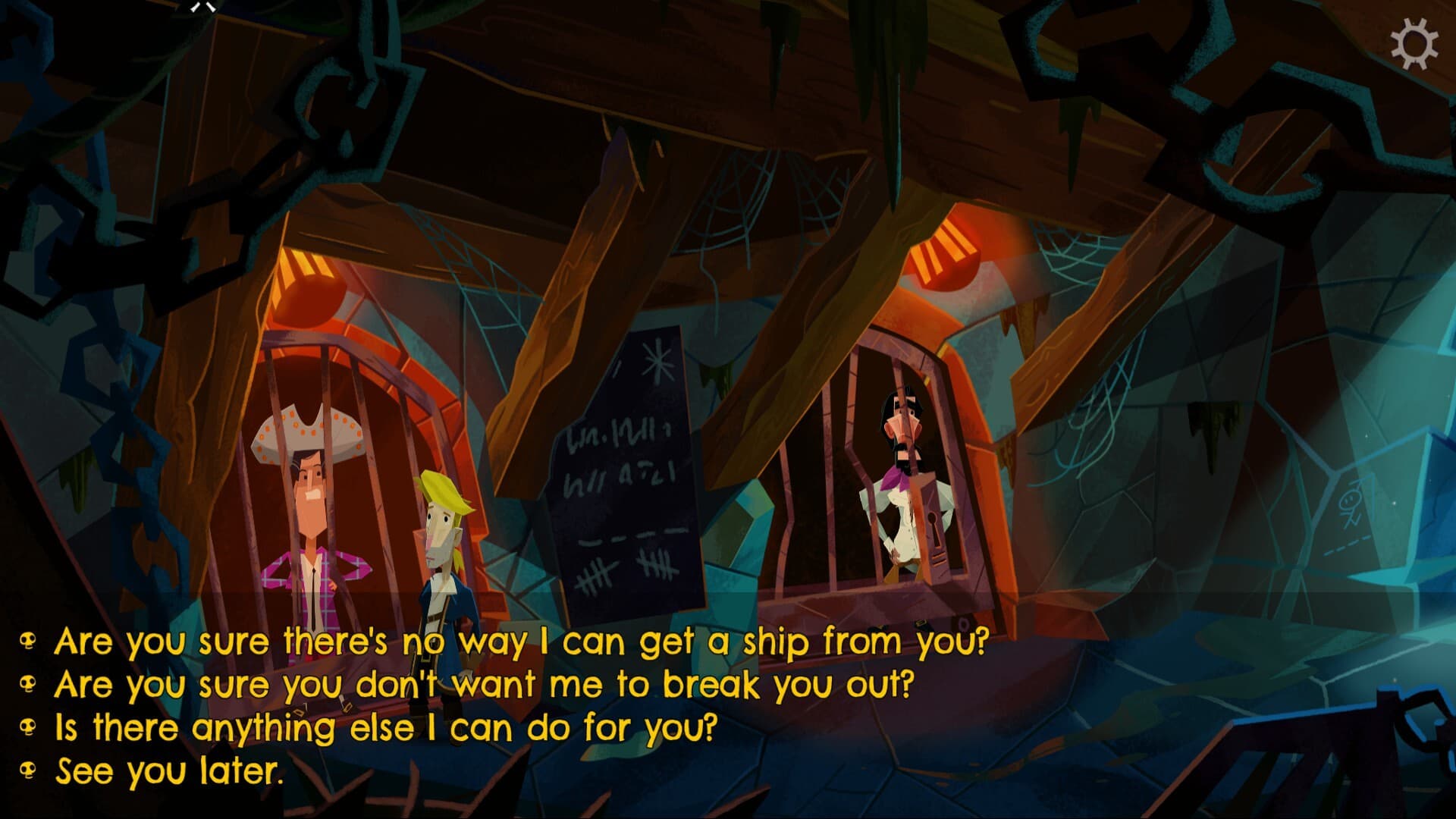Advertisement
Beloved game franchise Monkey Island returns with its original designers at the helm
Resume
Return to Monkey Island is out on Monday.
It’s the latest in a beloved adventure game franchise that was born back in 1990. For the first time in over 30 years, its original designers are back in charge.
“I think I've always wanted to come back to the series, mostly because of the ending of Monkey Island 2,” says creator Ron Gilbert. “It was an odd cliffhanger, and we never really got a chance to resolve it.”
Return to Monkey Island picks up right where 1991’s Monkey Island 2 left off, with the son of series hero Guybrush Threepwood re-enacting its ending. But the game is a new journey entirely, filled with witty repartee, goofy ghosts and absurd puzzles.

Framed as a story told by Guybrush to his son, Return to Monkey Island can be just as self-reflective as it is silly. It’s the product of designers Ron Gilbert and Dave Grossman, who’ve had a lot of time to reflect on the industry and their place within it.
Interview highlights
On how the original game influenced storytelling in the medium
Ron Gilbert: “I think telling stories through games has always been very popular. What we try to do is tell stories that are a little deeper and involve a lot of characters and involve talking to characters and puzzling out situations.”
Dave Grossman: “I remember back 30 years ago, there seemed to be a lot of debate about whether you could tell stories in games, whether those two things were compatible at all. We and people like us demonstrated way back then that you could and that has never stopped.”
On the experience of playing Monkey Island games
Gilbert: “We're primarily just trying to entertain people. And I hope that their brain is engaged, that they're solving puzzles, that they're going on. And I hope they're engaged, you know, by the funny dialog and the different characters that they're meeting and kind of puzzling their way through the whole story. Because these aren't movies, right? It's not a ride you get on and then you just experience it. You really do have to control and direct things and make decisions. And I've always found that that engages the player like a lot more than just a viewer of a movie can engage because you're actually manipulating things.”
Grossman: “As for the style of humor, it's hard to describe. But I will say that in the early days before we made the first one, I was reading, inspired by a lot of British absurdists — anywhere from ‘Monty Python’ to P.G. Wodehouse, maybe Douglas Adams in the middle somewhere. So there's sort of wordy humor and slapstick humor and thinking humor with something below the surface.”
On how they integrate puzzles with story
Grossman: “We mostly work from the top down, and the end to the beginning. So we sort of start in a room with nothing and we talk theme for a while and we come up with a sort of a basic story to support that theme and divide it into chapters.
“Then we start putting a structure in there that's puzzles by adding player goals at the end of each of those chapters and then going from the goals to the kind of crazy, puzzly, kinds of things that you're going to do in order to achieve those goals. And then we start working in the characters who often start as little mechanical people whose sole purpose is to support a puzzle and then evolve as we then write the script, which is kind of the last thing we do, into actual fleshed-out people.”
On the negative response some fans had to the new, more stylized look
Gilbert: “Every Monkey Island game has a different art style. Talking to the guy who headed up Monkey Island 3, he was reminding us how much people hated the art from Monkey Island 3 when it came out, which is now beloved. So I think once people actually play the game and experience the game and see the animation and the characters, I think this will just be a non-issue a couple of months from now.”

On what advice they’d give to modern game designers
Grossman: “I see self-indulgent game design in general about mechanics and structure. People making decisions because they think a thing is cool. And maybe it is if you're the developer who came up with it.
“I think the worst offenders are probably puzzle designers who haven't thought about how people are going to solve the thing that they have been asked to solve. And I think we ourselves used to be a little bit guilty of this and have just learned over years and years of doing it to try and make things that the audience actually does have a prayer of solving so that when they go to the hint guide and find out what the actual solution is, they go, ‘Oh, right, that makes sense now.’ As opposed to ‘What was that and how do they expect me to solve it?’”
On their favorite puzzles from the Monkey Island series
Gilbert: “I think my favorite puzzle of all time really happened in Monkey Island 1 when you had to break Otis out of jail and you could get the grog from the bar that was highly corrosive. But if you put it in a mug, it would dissolve the mug before you got up to the jail cell. But if you are clever, you can pick up a bunch of mugs and then transfer the grog from the mug to keep it from just dissolving.”
Grossman: “I was going to bring up one actually from a similar point and in the same game. It's where you're trying to find the sword master so you can challenge her and defeat her. And only one person knows where she is. And they keep offering to act as a go-between for you and take her messages. And they're like, ‘I'll be right back. You wait, wait here.’ And the leap that you have to make is just to follow him. And then you sort of use the regular navigation mechanics to follow him across the island and solve the puzzle that way.”
This segment aired on September 19, 2022.
